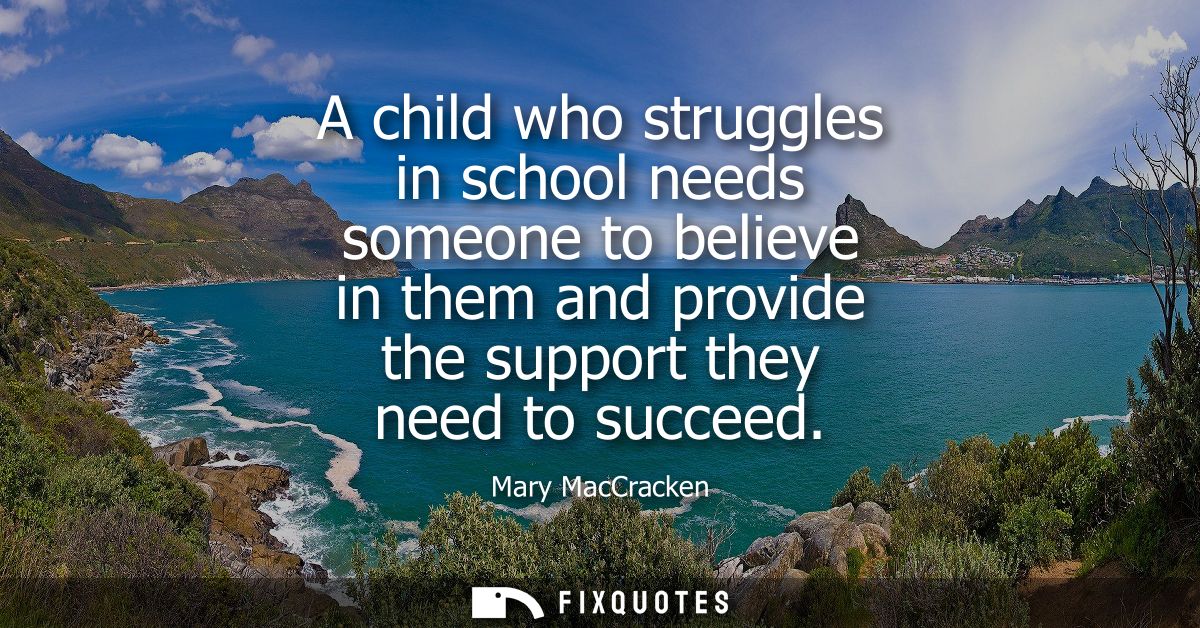"A child who struggles in school needs someone to believe in them and provide the support they need to succeed"
About this Quote
The line centers two forces that can transform a child’s school experience: belief and concrete support. Belief is not a soft sentiment; it is the psychological ground on which perseverance grows. Many children who struggle carry shame, fear of failure, and a shrinking sense of competence. When a trusted adult communicates, through words and consistent actions, “You can learn, and I will stay with you while you do,” the child borrows confidence until it becomes their own. Research on resilience echoes this: one dependable, caring relationship often predicts better outcomes despite adversity.
Yet belief alone is insufficient if it is merely cheerleading. Support makes belief tangible. It means targeted instruction, patient scaffolding, and tools matched to the child’s profile, multi-sensory methods for dyslexia, explicit strategy teaching for executive function challenges, assistive technology for reading or writing barriers, clear routines that reduce cognitive load. It means breaking work into manageable steps, giving timely feedback, celebrating small gains, and allowing multiple ways to show understanding. High expectations remain, but they are partnered with the structures needed to reach them.
The word someone matters. A single teacher, counselor, mentor, or family member can interrupt a narrative of “I can’t” and replace it with a trajectory of growth. Systems should make this easier, smaller class sizes, early screening, multi-tiered supports, yet even within imperfect systems, dependable adults change lives.
Underlying the message is a shift from a deficit lens to a strengths-based one. Struggle is not a verdict; it is information that guides instruction. Success broadens beyond grades to include agency, curiosity, and the confidence to tackle the next challenge. To believe in a struggling learner is to see potential before it is visible, and to stand close enough, through practical, persistent help, that the child can eventually see it too.
More details
About the Author

